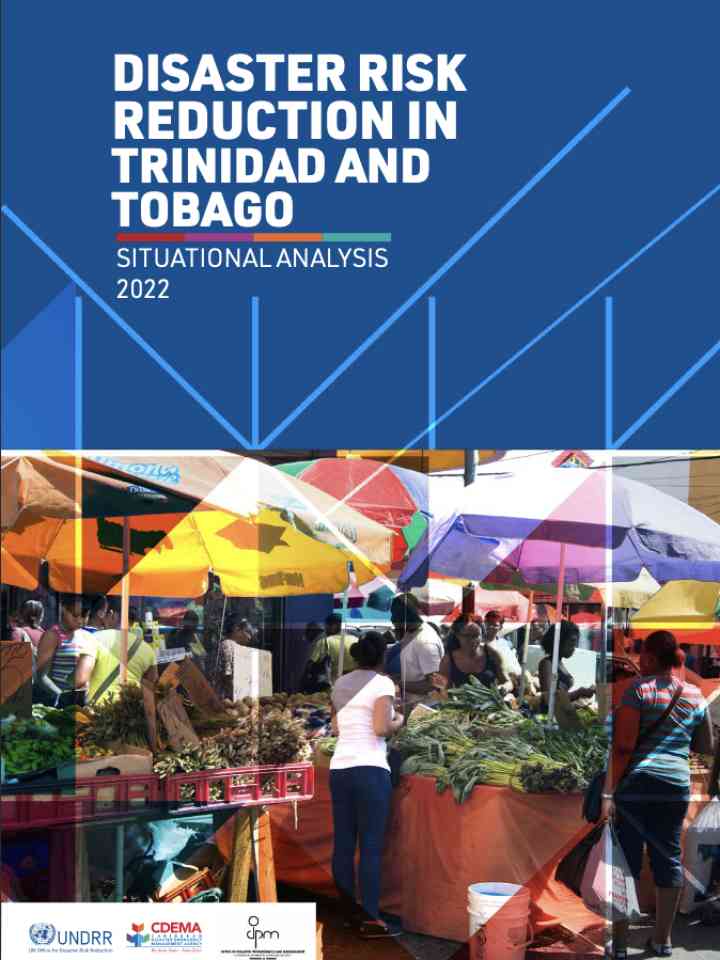Disaster risk reduction in Trinidad and Tobago: Situational analysis 2022
This report presents the risk profile for Trinidad and Tobago, exploring hazards, vulnerabilities, exposures and capacities. The review and recommendations will therefore be of particular interest to the stakeholders at the national, subnational, regional and global levels, including state and sectoral entities, private sector organisations, academia, donor agencies, civil society organisations, and other stakeholders interested in understanding the risk environment for Trinidad and Tobago in support of targeted interventions. The issues, needs and gaps within the national framework for disaster risk re- duction have informed the recommendations about the priority areas for intervention.
The publication presents the following findings:
- Underlying processes such as population increase, unsustainable development practices, globalisation and climate change further exacerbate the country's risk profile;
- Reliance on the hydrocarbon industry, growing unemployment rates and an 'extremely poor' population of 8.3% contribute to the country's socioeconomic vulnerability;
- Sectoral policies are disaggregated and fail to take a comprehensi- ve, all-hazards approach to disaster management. Like climate change, disaster risk reduction must also be integrated within the development agenda in Trinidad and Tobago;
- Growing migrant populations, population health and welfare characteristics, and vulnerable groups (indigenous peoples, elderly, disabled persons) interplay with economic circumstances and hazard exposure to create an intricate vulnerability web for the country.
